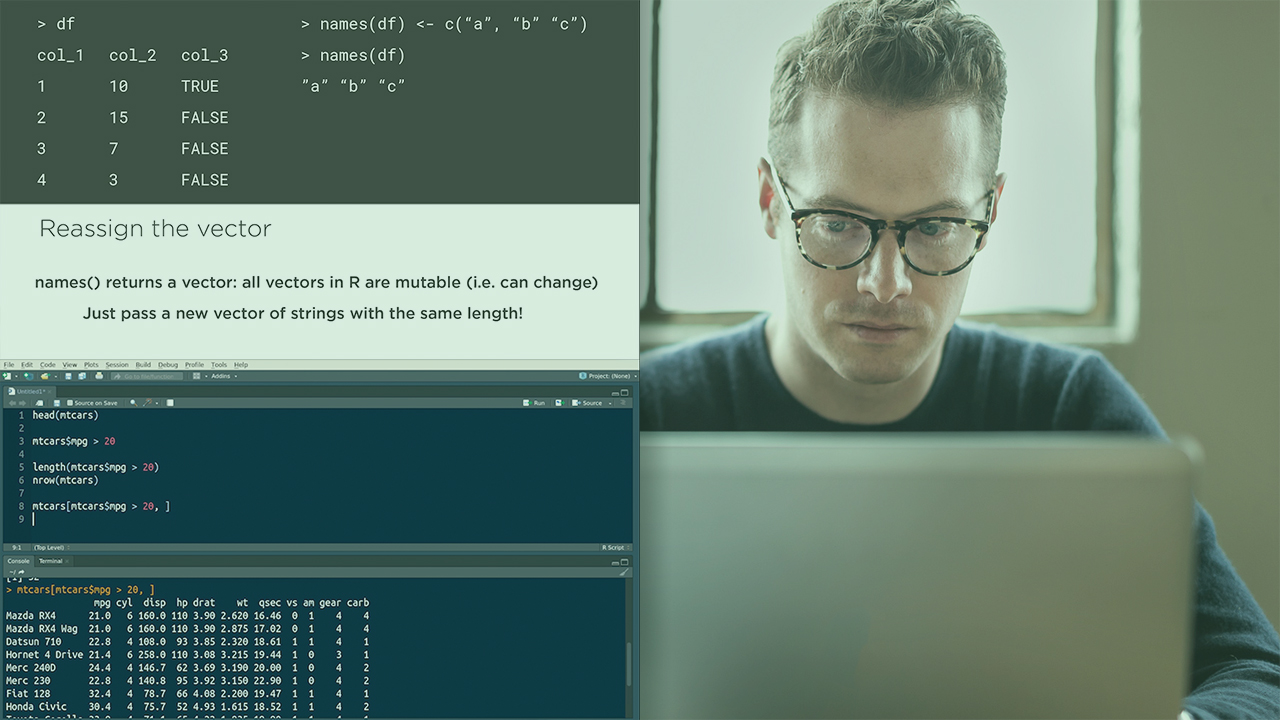- Course
Manipulating Dataframes in R
People coming from spreadsheets are blown away with how easy and powerful it is to manipulate tabular data with R. In this course, you will learn the fundamental building blocks of how to work with the R data frame.

- Course
Manipulating Dataframes in R
People coming from spreadsheets are blown away with how easy and powerful it is to manipulate tabular data with R. In this course, you will learn the fundamental building blocks of how to work with the R data frame.
Get started today
Access this course and other top-rated tech content with one of our business plans.
Try this course for free
Access this course and other top-rated tech content with one of our individual plans.
This course is included in the libraries shown below:
- Data
What you'll learn
Data preparation is one of the most difficult and time-consuming tasks for data professionals. In this course, Manipulating Dataframes in R, you will learn foundational knowledge of the R dataframe. First, you will explore the basics of the data frame. Next, you will discover how to access certain fields in your data. Finally, you will learn how to do these same tasks with the powerful dplyr package. When you’re finished with this course, you will have the skills and knowledge of data manipulation in R needed to succeed at getting your data into the proper form for analysis.

